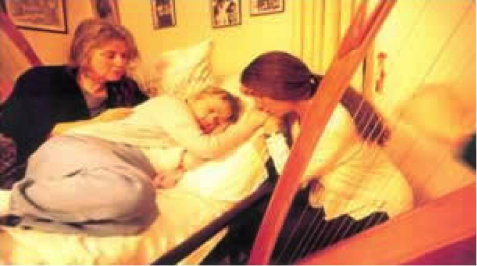In Brief: What is Contemplative Musicianship™?

Can the world support a medicine of peace? The greater question might be: Friend, how can we not?
In order to work with the dying with prescriptive music, a very particular reflective formation, education, orientation, transformation and dedication occurs. We speak about the spiritual call of vocation, not only profession. Though certified music-thanatologists represent a wide spectrum of religious identities within the Judeo-Christian and Buddhist worldviews, all have grown and studied together in a curricular formation that emphasizes metanoia — a deep change of the formerly habituated and unconscious ways of being/knowing that results in a greater good. This gradual, ongoing and thorough inner change is experienced as an integrative and transformational praxis. It can prepare one spiritually and emotionally to meet the daily challenges of a high-pressure service profession.
Second, regardless of religious identity, music-thanatologists share a daily spiritual praxis that permeates the whole imagination while supporting personal freedom and responsible choice. In many different ways, we ourselves try to link (on some inner level) with our dying patients by taking up the opportunity to die to something little each day. In “letting go of” an opinion, a bias, a grudge, a disappointment, a lingering resentment, a misplaced attachment, we are practicing a kind of unbinding process, by choice. In the end, this repeated praxis becomes a capacity. At the same time, it prepares each personally for the great transition which awaits every human being and crowns the human biography. Finally, the contemplative dimension resembles the continual process of tuning and re-tuning and fine-tuning the harp strings. If we can embody an interiorized fine-tuning praxis daily, the soul, mind, body and being also gradually become harmonized.
This text was excerpted from Transitus: A Blessed Death in the Modern World (St Dunstan’s Press 1st edition 2000 and 2nd edition 2005); “The Chalice of Repose Project’s Music-Thanatology: History and Praxis” in Music and Medicine: Volume 9, Issue 2, pp 128 – 144; and the forthcoming Luminous Wound series (Angelico Press). All are © Therese Schroeder-Sheker; all rights reserved.
This vigil information continues on Why the Harp?
Updated February 23, 2025 and Copyright © (2003- 2025) All rights reserved. Chalice of Repose Project®
